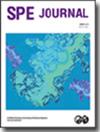Novel Use of Microbial Hydrocarbon Detection Technology in Reducing the Risk of Nonhydrocarbon Exploration in Oil and Gas Exploration in the South China Sea
IF 3.2
3区 工程技术
Q1 ENGINEERING, PETROLEUM
引用次数: 0
Abstract
As the exploration of the South China Sea continues into deeper water, the chances of encountering nonhydrocarbon gas (CO2, N2, etc.) reservoirs rise. The question of how to avoid the risks associated with the discovery of nonhydrocarbon gas reservoirs becomes an issue for deepwater (DW) oil and gas exploration. Geomicrobial hydrocarbon detection (GMHD) is a nonseismic hydrocarbon detection technology that is able to predict the hydrocarbon potential of a prospective area at depth. This is accomplished via the detection of specific hydrocarbon-oxidizing bacteria in both onshore soils and offshore sea bottom sediment samples. The effectiveness of this method has been proved repeatedly in DW explorations of the northern South China Sea. It documents a possible solution to nonhydrocarbon gas risk prediction by combining the oil and gas prediction results of geomicrobial hydrocarbon detection with results from geological and geophysical studies to analyze the different microbial responses above nonhydrocarbon gas and hydrocarbon gas reservoirs. This was verified in the DW exploration practices undertaken in the Pearl River Mouth Basin and Qiongdongnan Basin of South China Sea.微生物油气检测技术在降低南海油气勘探非油气勘探风险中的新应用
随着南海油气勘探不断深入,发现非烃气(CO2、N2等)储层的机会越来越大。如何避免非烃类气藏的发现所带来的风险成为深水油气勘探面临的一个问题。地质微生物油气探测技术(GMHD)是一种非地震油气探测技术,能够在深部预测远景区域的油气潜力。这是通过检测陆上土壤和近海海底沉积物样本中的特定碳氢化合物氧化细菌来完成的。该方法的有效性已在南海北部DW勘探中得到多次验证。将地质微生物油气探测油气预测结果与地质、地球物理研究结果相结合,分析非烃气和油气储层上方不同的微生物响应,为非烃气风险预测提供了一种可能的解决方案。南海珠江口盆地和琼东南盆地的DW勘探实践验证了这一点。
本文章由计算机程序翻译,如有差异,请以英文原文为准。
求助全文
约1分钟内获得全文
求助全文
来源期刊

SPE Journal
工程技术-工程:石油
CiteScore
7.20
自引率
11.10%
发文量
229
审稿时长
4.5 months
期刊介绍:
Covers theories and emerging concepts spanning all aspects of engineering for oil and gas exploration and production, including reservoir characterization, multiphase flow, drilling dynamics, well architecture, gas well deliverability, numerical simulation, enhanced oil recovery, CO2 sequestration, and benchmarking and performance indicators.
 求助内容:
求助内容: 应助结果提醒方式:
应助结果提醒方式:


